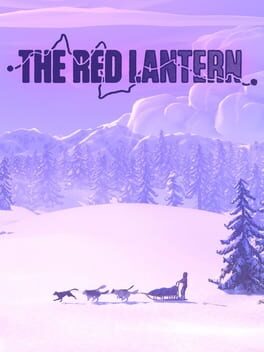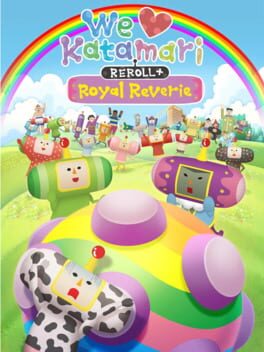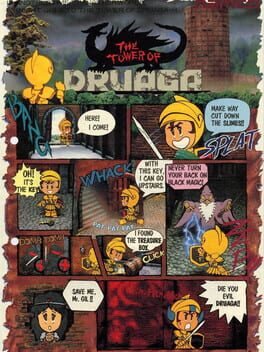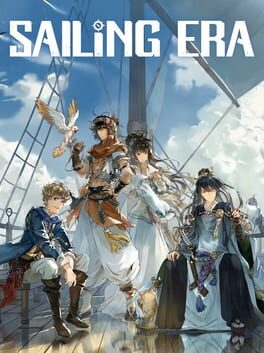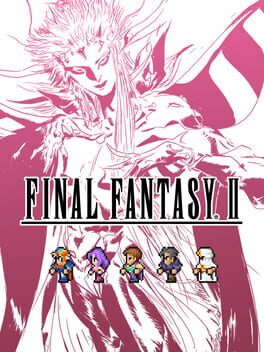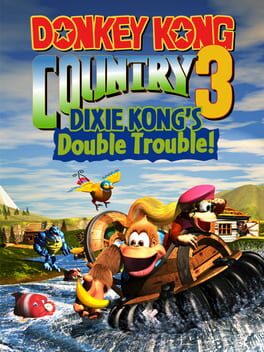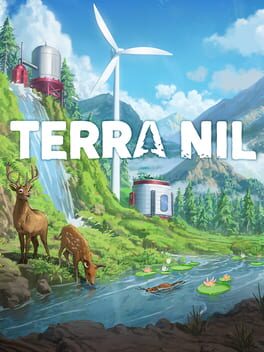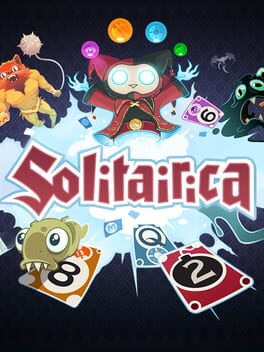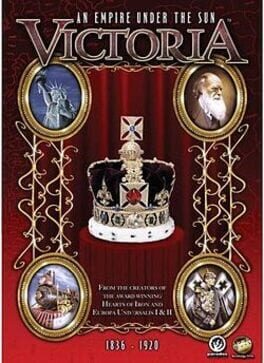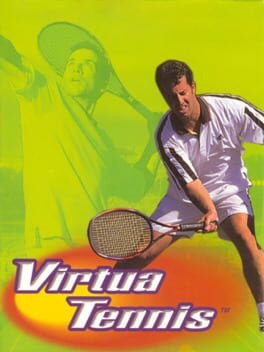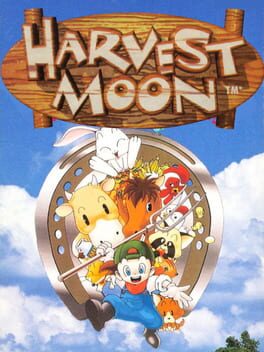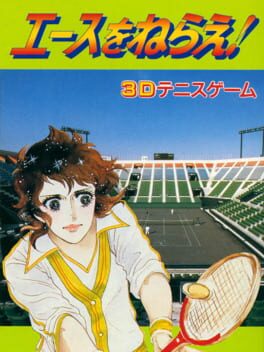tradegood
2020
The Red Lantern is an interesting indie roguelike about Dog Sledding. The game makes a great first impression with its graphics and voice acting, and even though the game is relatively short at about 2 hours long, it ends within minutes of overstaying its welcome. Credit to the team who made this for being realistic about the scope and showing some restraint. I beat it in 5 runs, but if I had to do a 6th, I would have started to sour on it. There is a post game and a way to be a completionist for those who want it, but I felt like I had seen everything after 4 runs.
I love the idea of having non-combat roguelites, but the game would have worked better if it was structured like Oregon Trail instead of having permanent upgrades. I found the basic gameplay loop enjoyable, but the meta progression very lacking. The basics are, you pick a direction, an event is set up, you can engage or not, and if you engage you have a second choice. There’s not much beyond that, there’s only 1 minigame (hunting), and it was so easy I never missed my shot. Most of your time is spent doing resource management, but that’s where the larger loop breaks down. Some of the permanent upgrades are incredibly impactful (like the flint and the dog boots) that it removes the sense of danger. Other ones, like fishing pole, axe, and trap I only used once and didn’t need them by the time I got them. Ultimately my final run was my least favorite run, because much of the challenge was taken away and I had seen enough of the content that I skipped through a lot of the dead ends that eat resources.
The roguelike design also makes the story feel incredibly contrived. You can look at the real-life examples of people who leave for Alaska from Into the Wild or Grizzly Man and they’re marginal outsiders who still have survival skills and know the risks. This story is about a San Francisco doctor decided her pet dog was going to lead an expedition to a remote part of Alaska and only packs enough for half a day of food, 2 fires, a band-aid, and 3 bullets. It’s only due to last minute nightmares of getting slaughtered or dying from exposure that she remembers to pack things like an axe. Ashly Birch’s skillful delivery can only suspend so much disbelief, and the fact that the entire game is voice acted at all times, it gets repetitive after about an hour. The game fails to make any kind of statement about the type of people who give everything up, or if doing that is a good idea. The threat of bears, starvation, and lack of resources doesn’t go away for the character once the game is over.
Still, it’s an interesting game and I’m glad I picked it up on a deep discount. I liked it a lot more while playing it then I do while thinking about it in hindsight.
I love the idea of having non-combat roguelites, but the game would have worked better if it was structured like Oregon Trail instead of having permanent upgrades. I found the basic gameplay loop enjoyable, but the meta progression very lacking. The basics are, you pick a direction, an event is set up, you can engage or not, and if you engage you have a second choice. There’s not much beyond that, there’s only 1 minigame (hunting), and it was so easy I never missed my shot. Most of your time is spent doing resource management, but that’s where the larger loop breaks down. Some of the permanent upgrades are incredibly impactful (like the flint and the dog boots) that it removes the sense of danger. Other ones, like fishing pole, axe, and trap I only used once and didn’t need them by the time I got them. Ultimately my final run was my least favorite run, because much of the challenge was taken away and I had seen enough of the content that I skipped through a lot of the dead ends that eat resources.
The roguelike design also makes the story feel incredibly contrived. You can look at the real-life examples of people who leave for Alaska from Into the Wild or Grizzly Man and they’re marginal outsiders who still have survival skills and know the risks. This story is about a San Francisco doctor decided her pet dog was going to lead an expedition to a remote part of Alaska and only packs enough for half a day of food, 2 fires, a band-aid, and 3 bullets. It’s only due to last minute nightmares of getting slaughtered or dying from exposure that she remembers to pack things like an axe. Ashly Birch’s skillful delivery can only suspend so much disbelief, and the fact that the entire game is voice acted at all times, it gets repetitive after about an hour. The game fails to make any kind of statement about the type of people who give everything up, or if doing that is a good idea. The threat of bears, starvation, and lack of resources doesn’t go away for the character once the game is over.
Still, it’s an interesting game and I’m glad I picked it up on a deep discount. I liked it a lot more while playing it then I do while thinking about it in hindsight.
1984
It's deeply unfair and hard to read, but I kind of love it anyway. There are so many missable items that this game demands that you create your own strategy guide. I missed the candle and then loaded into an all-black area, and had no choice but to just restart. But it's not just the big upgrades, you have to read your enemies the second you load into a level or they can kill you very easily. I played this using judicious use of save states but still ran into many unwinnable situations. You need to meet the game at its level, but if you do you can have a good time with it.
This is a brutal game, but still pretty fun. It earned its role as the granddaddy of RPGs, but do not go into this game unprepared for it to be as punishing as it is.
This is a brutal game, but still pretty fun. It earned its role as the granddaddy of RPGs, but do not go into this game unprepared for it to be as punishing as it is.
2022
I think Bayonetta 3 is symbolic of what can go wrong when there's too long of a development cycle. Bayonetta 1 and 2 had a vision which was always apparent even when it wasn't perfectly executed. Bayonetta 3 feels like many games at once... and leads to it feeling overcooked and overdesigned, losing a lot of what made the first two games special.
What I loved about Bayonetta was the grace and dexterity of a fast-moving protagonist, exploring the surprisingly long levels, seeing a variety of enemies in different situations, fast and frantic platforming, and some well-timed surprises. In Bayonetta 3, Platinum Games tried to one-up themselves in every aspect but ended up compromising much of these things.
The elephant in the room are the technical limitations of the Switch. Even when the game wasn't running poorly you could see how it limited the creative vision for the game. The game was based around summoning large Kaijus and Infernal Beings to take part in the fight so that every fight was a big showdown. However, this meant only a couple of enemies on the screen at a time, typically one big oversized boss and possibly some other repeated scrubs surrounding them. The drawback is you never feel quite so overwhelmed because the battlefield is never filled in the way it was in Bayonetta 1 and 2. It also makes the game feel like one large boss-rush as they are constantly emphasizing one enemy at a time in these fights. In order to damage larger enemies, Bayonetta must use the infernal beings, which hitches the frame rate and slows the pace down. The game feels balanced around spamming these summons, and as a result Bayonetta's combos feel weak in comparison and it feels like the game is constantly slowing her down. Specifically Gomorrah's fights feel painfully slow and there are a couple of sections that amount to rock-paper-scissors and are excruciatingly long. It's very clear this game values spectacle over smooth combat.
Outside of battle, there’s too much fog of death in this game, and the game feels like it’s pushing you into it constantly while you’re platforming. The worst of this is early on when you get the spider and have anti-gravity platforming, as well as any time that ‘weather’ effects blow you into the fog or a room has fog covering the floor. The other problem is that during typical platforming there aren't enemies chasing you down, so it feels like there is less danger or urgency. The exploration as well feels far more formulaic than in the past, with repeated patterns for how secrets are hidden.
I respect that they are trying a lot of new things, like the elevator action sections, door puzzles, inter-shmuptions, and the Audioshield-esque game in Paris. But combined with the ever escalating action sequences it all added up to a lot of noise and having so many different set pieces diminished the memorability of all of them. They got carried away with making everything ‘special’ that nothing feels meaningful. This is also evident in the story, which they clearly tried to raise the stakes and involve mystery but it resulted in a confusing case of "too much too soon."
The story is bad, I know many have spoken about how it falls apart at the end but it's pretty bad all the way through. The whole multiverse bullshit is over-saturated and uninteresting to begin with. I think the only way to play this game is to believe that it is “Bayonetta 3’s” game, and that it doesn’t impact the other two preceding games. Because otherwise, it means the earlier games aren’t really about anything any more. Those games were self contained and had good consistent worlds and this one just decided to make it fuzzy for some reason. Bayonetta's characterization in the final scenes is disappointing, but the story is so incoherent it blends together for me.
Overall I did not enjoy this experience, and while it's not the direction I would have chosen for this series, I understand why it is like this and what is coming next. I just think Bayonetta might not be for me.
What I loved about Bayonetta was the grace and dexterity of a fast-moving protagonist, exploring the surprisingly long levels, seeing a variety of enemies in different situations, fast and frantic platforming, and some well-timed surprises. In Bayonetta 3, Platinum Games tried to one-up themselves in every aspect but ended up compromising much of these things.
The elephant in the room are the technical limitations of the Switch. Even when the game wasn't running poorly you could see how it limited the creative vision for the game. The game was based around summoning large Kaijus and Infernal Beings to take part in the fight so that every fight was a big showdown. However, this meant only a couple of enemies on the screen at a time, typically one big oversized boss and possibly some other repeated scrubs surrounding them. The drawback is you never feel quite so overwhelmed because the battlefield is never filled in the way it was in Bayonetta 1 and 2. It also makes the game feel like one large boss-rush as they are constantly emphasizing one enemy at a time in these fights. In order to damage larger enemies, Bayonetta must use the infernal beings, which hitches the frame rate and slows the pace down. The game feels balanced around spamming these summons, and as a result Bayonetta's combos feel weak in comparison and it feels like the game is constantly slowing her down. Specifically Gomorrah's fights feel painfully slow and there are a couple of sections that amount to rock-paper-scissors and are excruciatingly long. It's very clear this game values spectacle over smooth combat.
Outside of battle, there’s too much fog of death in this game, and the game feels like it’s pushing you into it constantly while you’re platforming. The worst of this is early on when you get the spider and have anti-gravity platforming, as well as any time that ‘weather’ effects blow you into the fog or a room has fog covering the floor. The other problem is that during typical platforming there aren't enemies chasing you down, so it feels like there is less danger or urgency. The exploration as well feels far more formulaic than in the past, with repeated patterns for how secrets are hidden.
I respect that they are trying a lot of new things, like the elevator action sections, door puzzles, inter-shmuptions, and the Audioshield-esque game in Paris. But combined with the ever escalating action sequences it all added up to a lot of noise and having so many different set pieces diminished the memorability of all of them. They got carried away with making everything ‘special’ that nothing feels meaningful. This is also evident in the story, which they clearly tried to raise the stakes and involve mystery but it resulted in a confusing case of "too much too soon."
The story is bad, I know many have spoken about how it falls apart at the end but it's pretty bad all the way through. The whole multiverse bullshit is over-saturated and uninteresting to begin with. I think the only way to play this game is to believe that it is “Bayonetta 3’s” game, and that it doesn’t impact the other two preceding games. Because otherwise, it means the earlier games aren’t really about anything any more. Those games were self contained and had good consistent worlds and this one just decided to make it fuzzy for some reason. Bayonetta's characterization in the final scenes is disappointing, but the story is so incoherent it blends together for me.
Overall I did not enjoy this experience, and while it's not the direction I would have chosen for this series, I understand why it is like this and what is coming next. I just think Bayonetta might not be for me.
2023
I'll check out any game that goes after the promise of Uncharted Waters, Sid Meier's Pirates!, and Port Royale. But I found almost all of this game's systems to be hard to grok. It's a heavily story-driven game, but the Portugal campaign story is so stuffed with filler and distracts from the gameplay so much that it hurts what this game is trying to do. The idea is to have more of a connection with the named characters, but I think it actually hinders my ability to relate to them when they are given such generic dialogue and personalities.
This game's UI similarly works against the player, and after 2 hours of playing it's still hard to know exactly how much supplies I have and how much I am using, which is very fundamental to the game. I have no clue how much money I'm spending or how much a trip to another part of the map will cost. There are a lot of tutorial messages but they overlap with each other so much that it's really not designed to be retained. The core gameplay loop seems fine but a little over-designed for its own good. It seems to use the same ideas as something like Pirates! but that game makes it simple. I don't think adding extra menus and micromanagement particularly helps this game feel good to play. The systems give the appearance of depth but I have a feeling the game 20 hours in will feel a lot like the game at 2 hours in.
This game's UI similarly works against the player, and after 2 hours of playing it's still hard to know exactly how much supplies I have and how much I am using, which is very fundamental to the game. I have no clue how much money I'm spending or how much a trip to another part of the map will cost. There are a lot of tutorial messages but they overlap with each other so much that it's really not designed to be retained. The core gameplay loop seems fine but a little over-designed for its own good. It seems to use the same ideas as something like Pirates! but that game makes it simple. I don't think adding extra menus and micromanagement particularly helps this game feel good to play. The systems give the appearance of depth but I have a feeling the game 20 hours in will feel a lot like the game at 2 hours in.
2021
I really enjoy FFII. It’s great, and definitely worth re-examination for anyone who dismisses it out of pocket as “the worst final fantasy”. It actually has a very down to earth story and characters with a lot of big moments, whether it’s Josef's tragic death, a boss mimicking Hilda, Leila showing up instead of a boss to help you retake Fynn Castle, getting swallowed by Leviathan, or Firion’s doppleganger appearing in a dungeon. Even characters like Paul, the honest thief, are developed well! I love that the story is so prosaic, it’s about humans having the capacity to do terrible things to each other because they want power, and how it takes an emotional toll on people going through loss and suffering. It’s all done very tastefully.
But when it comes to the ending, it loses me a bit. The game famously fakes you out, and after defeating the emperor, you celebrate with a formal ballroom festivity (which is how every game should end), but suddenly you discover that someone else is a pretender to the emperor’s throne. It turns out to be the Dark Knight, who you peg immediately as Firion’s brother Leonheart, who you have been searching for this whole game. You make your way through the castle to his throne room, where he is completely off the rails crazy, cruel, and power hungry. He’s ready to do extreme damage to innocent people. You’re about to come face to face with him, but then…. the emperor shows up, opens the gate to hell, and your insane brother decides to chicken out on becoming the big bad guy, and joins you instead. Just a complete 180 immediately. And the party accepts him without any pushback.
Pandemonium is a slog… I think the dungeons in this game have far too many empty rooms, and while this one has some cool loot, I found myself going on no-encounters mode a bunch just to get through with it. Then the final battle, which is legitimately very very hard, becomes completely trivialized if you equip the blood sword. I went from dying without much hope for winning, to winning in like 4 turns once I equipped it.
At the very least, I appreciate that Leonheart doesn’t get the happy ending that everyone else does. There’s a star wars style procession for the three main heroes (complete with ghosts of the friends you make along the way), but it ends with Leonheart walking off in shame, and the gallant Firion says he will welcome his brother back. I think all this is great but it’s hardly earned when we spent such little time with Leonheart as the primary villain. The emperor did so much evil and leveled entire cities just for the sake of it, and Leonheart only took the throne long enough to cower in the emperor’s presence. Sure it makes him more redeemable but in the end the game winds up saying less about what motivates people to do horrific things then it should have.
But when it comes to the ending, it loses me a bit. The game famously fakes you out, and after defeating the emperor, you celebrate with a formal ballroom festivity (which is how every game should end), but suddenly you discover that someone else is a pretender to the emperor’s throne. It turns out to be the Dark Knight, who you peg immediately as Firion’s brother Leonheart, who you have been searching for this whole game. You make your way through the castle to his throne room, where he is completely off the rails crazy, cruel, and power hungry. He’s ready to do extreme damage to innocent people. You’re about to come face to face with him, but then…. the emperor shows up, opens the gate to hell, and your insane brother decides to chicken out on becoming the big bad guy, and joins you instead. Just a complete 180 immediately. And the party accepts him without any pushback.
Pandemonium is a slog… I think the dungeons in this game have far too many empty rooms, and while this one has some cool loot, I found myself going on no-encounters mode a bunch just to get through with it. Then the final battle, which is legitimately very very hard, becomes completely trivialized if you equip the blood sword. I went from dying without much hope for winning, to winning in like 4 turns once I equipped it.
At the very least, I appreciate that Leonheart doesn’t get the happy ending that everyone else does. There’s a star wars style procession for the three main heroes (complete with ghosts of the friends you make along the way), but it ends with Leonheart walking off in shame, and the gallant Firion says he will welcome his brother back. I think all this is great but it’s hardly earned when we spent such little time with Leonheart as the primary villain. The emperor did so much evil and leveled entire cities just for the sake of it, and Leonheart only took the throne long enough to cower in the emperor’s presence. Sure it makes him more redeemable but in the end the game winds up saying less about what motivates people to do horrific things then it should have.
It’s a good game! I acknowledge I’m blinded by nostalgia toward DKC 1 & 2, but I think DKC3 suffers from getting in its own way more than those games. For one thing, I don’t love the way DKC3 handles secrets. I think they took cues from Diddy Kong’s Quest that they need to cram more secrets in there and make the timer shorter. The challenges aren’t necessarily difficult, but you need to complete them perfectly which is not as fun as a more complex task you can take your time doing.
I suppose it promotes replayability, but I dont think this game’s difficult enough that I need to replay through the same level over and over. Maybe I’m just good enough at controlling Dixie and Kiddie that the pure platforming levels are pretty easy up through the snow area. What isn’t as intuitive are the levels with a gimmick. Stuff like the fish food feeding frenzy are just annoying that you get attacked by an unavoidably occasionally. I don’t particularly care for the ones where you play the whole thing as an animal companion. I think their abilities aren’t that well conveyed. I didn’t use Ellie the Elephant’s water spray until I absolutely needed it, because I didn’t know it existed. It took the entire level of Squirter (!) the Spider to get the hang of how to use its webs. Enguarde is a good boi tho.
I feel that this game is unfairly maligned, but I think the reason is because DKC2 is a big jump forward from DKC1, and this one doesn’t really sell itself an an imporvement over DKC2 and the chances it took aren’t my cup of tea. After 2 games I think a lot of the environments also feel very samey which doesn’t help it differentiate itself. Still I’m happy this game it exists and to have more Donkey Kong Country.
I suppose it promotes replayability, but I dont think this game’s difficult enough that I need to replay through the same level over and over. Maybe I’m just good enough at controlling Dixie and Kiddie that the pure platforming levels are pretty easy up through the snow area. What isn’t as intuitive are the levels with a gimmick. Stuff like the fish food feeding frenzy are just annoying that you get attacked by an unavoidably occasionally. I don’t particularly care for the ones where you play the whole thing as an animal companion. I think their abilities aren’t that well conveyed. I didn’t use Ellie the Elephant’s water spray until I absolutely needed it, because I didn’t know it existed. It took the entire level of Squirter (!) the Spider to get the hang of how to use its webs. Enguarde is a good boi tho.
I feel that this game is unfairly maligned, but I think the reason is because DKC2 is a big jump forward from DKC1, and this one doesn’t really sell itself an an imporvement over DKC2 and the chances it took aren’t my cup of tea. After 2 games I think a lot of the environments also feel very samey which doesn’t help it differentiate itself. Still I’m happy this game it exists and to have more Donkey Kong Country.
2023
I have tried a few different City Builders themed around ecosystems before and they never quite do it for me, and this one also missed the mark for me. It is designed in a way that you’re always kind of fighting with yourself for how you allocate resources, where new upgrades are constantly unlocked so it kind of requires you to constantly erase what you’ve made in order to build something new on top of it. I don’t mind that loop coming hours into a game, but this happens in the first 10 minutes. Everything is limited by a small map size, forcing you to build ‘tall’ very quickly. The game is a little puzzle box constantly folding over itself. Not the worst game design but it’s not what I seek in a city builder. I get that it’s trying to make a political statement about the finite nature of the planet or whatever, but the systems would benefit by giving you a bigger plot of land to work with.
The resource constraints also put you under pressure to make decisions quite slowly and not at scale. Like instead of placing 5 windmills before placing the plant dispensers, the game really wants you to set up one windmill at a time and dispensers then move on to the second one, etc. If I’m geo-engineering, want to plan ahead so I can minmax the area of effectiveness. Instead you’re going to be inefficient by design and buildings can’t be deleted, only ‘recycled’ for other purposes. The idea is cute but I’m not a big fan.
The resource constraints also put you under pressure to make decisions quite slowly and not at scale. Like instead of placing 5 windmills before placing the plant dispensers, the game really wants you to set up one windmill at a time and dispensers then move on to the second one, etc. If I’m geo-engineering, want to plan ahead so I can minmax the area of effectiveness. Instead you’re going to be inefficient by design and buildings can’t be deleted, only ‘recycled’ for other purposes. The idea is cute but I’m not a big fan.
2016
I love the idea of a solitaire roguelite, but the roguelite aspects overshadow the actual solitaire to the game's detriment. I don't mind that it's heavily RNG dependent, but it is very much designed to not allow you complete a run without using the (rather overpowered) permanent upgrades. The items purchased after every round offer a good variety of ways to play, but ultimately I don't think it has too much of an impact until round 10+. The gameplay loop is not helped by the early levels being very simple but take a long time, even with shortened animations. When it takes half an hour to get to any form of challenge on your second run, I don't think there's that much longevity. I also got to round 15 or so and was killed with full health and not understanding what killed me, so I lost a lot of my encouragement to continue.
2012
Victoria 1 is unfortunately not very interesting in 2023. While the economy management sorta set the groundwork for the series, it’s extremely simple which is a very weird thing to say about a Victoria game. This game is very clearly a rushed product – it came out between EU II and Crusader Kings 1. I don’t think it got much love. Paradox was working lead programmer Johan Andersson to the bone… but he always brings at least some interesting design concepts to a game. His ideas and systems definitely matured over the years. This is clearly a rough draft without much of an identity.
Anyway, in my game I played as Mexico and won the Texas war of secession pretty easily. It suffers from the same tedious combat as other early paradox games of the era, but it’s not the worst implementation. Where Victoria really thrives is with the economy, and honestly I was happy to see so many tradegoods and sliders… but it was pretty simple to get myself in the green. I don’t think the economy is that complex to manage here, though I didn’t simulate more than 5 years so it might go up and down. Pops don’t seem to really a concern in this one. I did get some rebels but they were easy to put down. As for colonialism, I couldn’t get my head around how to settle in the border territories with US. Oh well! This is more a game for my own historical curiosity then something I would ever recommend.
Anyway, in my game I played as Mexico and won the Texas war of secession pretty easily. It suffers from the same tedious combat as other early paradox games of the era, but it’s not the worst implementation. Where Victoria really thrives is with the economy, and honestly I was happy to see so many tradegoods and sliders… but it was pretty simple to get myself in the green. I don’t think the economy is that complex to manage here, though I didn’t simulate more than 5 years so it might go up and down. Pops don’t seem to really a concern in this one. I did get some rebels but they were easy to put down. As for colonialism, I couldn’t get my head around how to settle in the border territories with US. Oh well! This is more a game for my own historical curiosity then something I would ever recommend.
1999
What a game!!! I did a tournament and it was a little easy up until the finals, where it got much harder but I was able to pull it out. Gameplay feels real smooth for a 2D tennis game. But the game really shines in the World Tour mode which is chock full of some pretty funny minigames (such as building a hamburger with serves). I love that you can grow your characters like an RPG from these minigames even way back on GBA. Before this, I think I had only played Virtua Tennis 3 and 4, and now feel like I underestimated this series. Would definitely play this some more.
1996
I played 14 days in my beloved snes Harvest Moon for the first time since Stardew Valley was in early access and it’s still so good. Days are very short but nights are as long as you want. The issue is, you don’t have much stamina and you have a time limit to drop things in the box. I accidentally made my potato farm too big already. Foraging is a bit of a grind… you can really only grab 2 pieces of fruit and sprint back to your box before the sun sets, or quickly grab flowers for your gf (in my case I’m romancing my first wife ever, Ellen), and then grab 1 fruit. I am looking forward to taking my horse to the old town road instead.
Only having 2 tools on your person and carrying one thing at a time is tough to go back to, but it’s still workable. All things considered the game still feels really really good to play. Even though I did waste some seeds accidentally because I didn’t realize I had it selected instead of my hoe. But at least with switch online, it’s easy to just rewind and act like it never happened.
I never really realized how much the relationship mechanics are front-and-center from the beginning, but I guess the game doesn’t really show off that many competing systems up front. It takes a while to get the story going, upgrade your house and animals, and have weather events that open up new areas, etc. But for the first month there’s not too much going on, so I understand why they want you to start giving flowers to the girls and read their diaries.
I am so glad that Stardew exists and expanded on this game in every way, but there’s still value in coming back to this one. I hope I just pop it back in every once in a while to progress the story because it is pretty great once it gets going.
Only having 2 tools on your person and carrying one thing at a time is tough to go back to, but it’s still workable. All things considered the game still feels really really good to play. Even though I did waste some seeds accidentally because I didn’t realize I had it selected instead of my hoe. But at least with switch online, it’s easy to just rewind and act like it never happened.
I never really realized how much the relationship mechanics are front-and-center from the beginning, but I guess the game doesn’t really show off that many competing systems up front. It takes a while to get the story going, upgrade your house and animals, and have weather events that open up new areas, etc. But for the first month there’s not too much going on, so I understand why they want you to start giving flowers to the girls and read their diaries.
I am so glad that Stardew exists and expanded on this game in every way, but there’s still value in coming back to this one. I hope I just pop it back in every once in a while to progress the story because it is pretty great once it gets going.
1993
It’s a quasi-3D tennis game, and absolutely brilliant. The game has a fixed camera perspective unlike any other tennis game, where your player’s sprite is centered, and the rest of the court moves as you move. This forces you to judge the speed and distance of the ball more genuinely than any stationary camera game. Risks are amplified with this camera setup and the long animations force you to have patience, because there really aren’t second chances to catch up if you misjudge the ball.
It’s a hard game, but it still manages to be player-friendly. It might first seem way too difficult to judge where the ball comes and where the hitbox is, once you practice and focus, you’ll discover that the game is very fair and even generous. It’s also impossible to play this game conservatively. You have to go aggressive with volleys, smashes, and vary your shots. The name of the game is Aim for the Ace – so there is a big emphasis on serving aces and return aces. It’s easy to get good at serving but you can’t get overconfident with a good serve alone. You have to have a complete skillset.
It’s also a story-driven visual novel game, which makes it even better. Your coach and team motivate you in between sets and it has little scenes at high-stakes parts of the match, which really give this game personality. All of your opponents play differently. I absolutely love that there’s a 14 hour campaign where you play complete 7-game, 3-set matches against your opponents. A fantastic change of pace from most tennis games where it’s designed around 5-10 minute mini-matches between the most elite players at the grand slam tournaments. Instead you take the role of an anxious high schooler just trying to just be a team player and not let down their team, and every match takes its sweet time. You can even lose matches and the story goes on! We need more games about the glory of amateur sports.
It’s a hard game, but it still manages to be player-friendly. It might first seem way too difficult to judge where the ball comes and where the hitbox is, once you practice and focus, you’ll discover that the game is very fair and even generous. It’s also impossible to play this game conservatively. You have to go aggressive with volleys, smashes, and vary your shots. The name of the game is Aim for the Ace – so there is a big emphasis on serving aces and return aces. It’s easy to get good at serving but you can’t get overconfident with a good serve alone. You have to have a complete skillset.
It’s also a story-driven visual novel game, which makes it even better. Your coach and team motivate you in between sets and it has little scenes at high-stakes parts of the match, which really give this game personality. All of your opponents play differently. I absolutely love that there’s a 14 hour campaign where you play complete 7-game, 3-set matches against your opponents. A fantastic change of pace from most tennis games where it’s designed around 5-10 minute mini-matches between the most elite players at the grand slam tournaments. Instead you take the role of an anxious high schooler just trying to just be a team player and not let down their team, and every match takes its sweet time. You can even lose matches and the story goes on! We need more games about the glory of amateur sports.
1990
